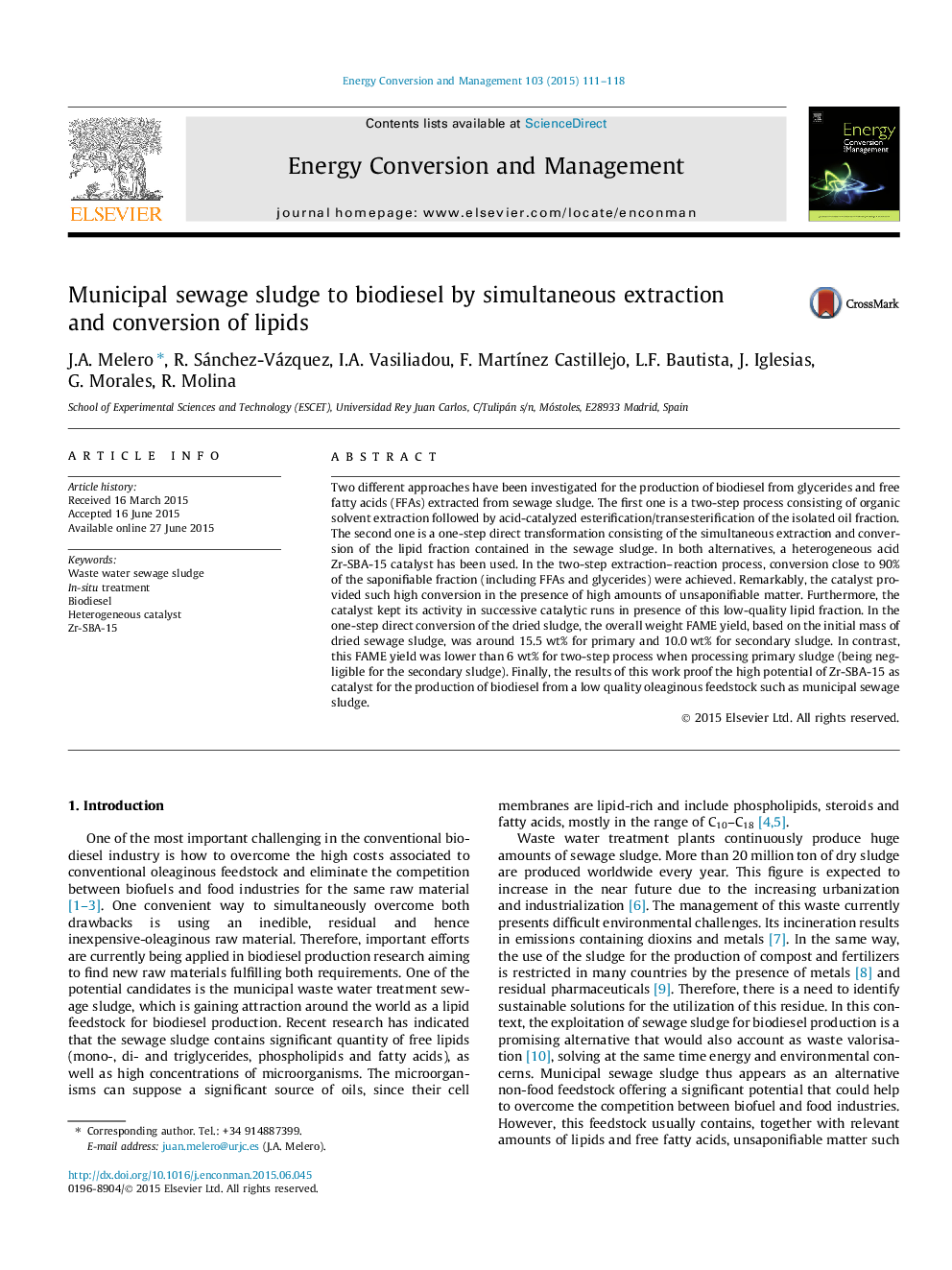| Article ID | Journal | Published Year | Pages | File Type |
|---|---|---|---|---|
| 771701 | Energy Conversion and Management | 2015 | 8 Pages |
•Efficient production of biodiesel from primary and secondary sewage sludge.•Zr-SBA-15 converts more than 90% of the saponifiable oil fraction into FAME.•High water and impurities tolerance of the Zr-SBA-15 catalyst.
Two different approaches have been investigated for the production of biodiesel from glycerides and free fatty acids (FFAs) extracted from sewage sludge. The first one is a two-step process consisting of organic solvent extraction followed by acid-catalyzed esterification/transesterification of the isolated oil fraction. The second one is a one-step direct transformation consisting of the simultaneous extraction and conversion of the lipid fraction contained in the sewage sludge. In both alternatives, a heterogeneous acid Zr-SBA-15 catalyst has been used. In the two-step extraction–reaction process, conversion close to 90% of the saponifiable fraction (including FFAs and glycerides) were achieved. Remarkably, the catalyst provided such high conversion in the presence of high amounts of unsaponifiable matter. Furthermore, the catalyst kept its activity in successive catalytic runs in presence of this low-quality lipid fraction. In the one-step direct conversion of the dried sludge, the overall weight FAME yield, based on the initial mass of dried sewage sludge, was around 15.5 wt% for primary and 10.0 wt% for secondary sludge. In contrast, this FAME yield was lower than 6 wt% for two-step process when processing primary sludge (being negligible for the secondary sludge). Finally, the results of this work proof the high potential of Zr-SBA-15 as catalyst for the production of biodiesel from a low quality oleaginous feedstock such as municipal sewage sludge.
